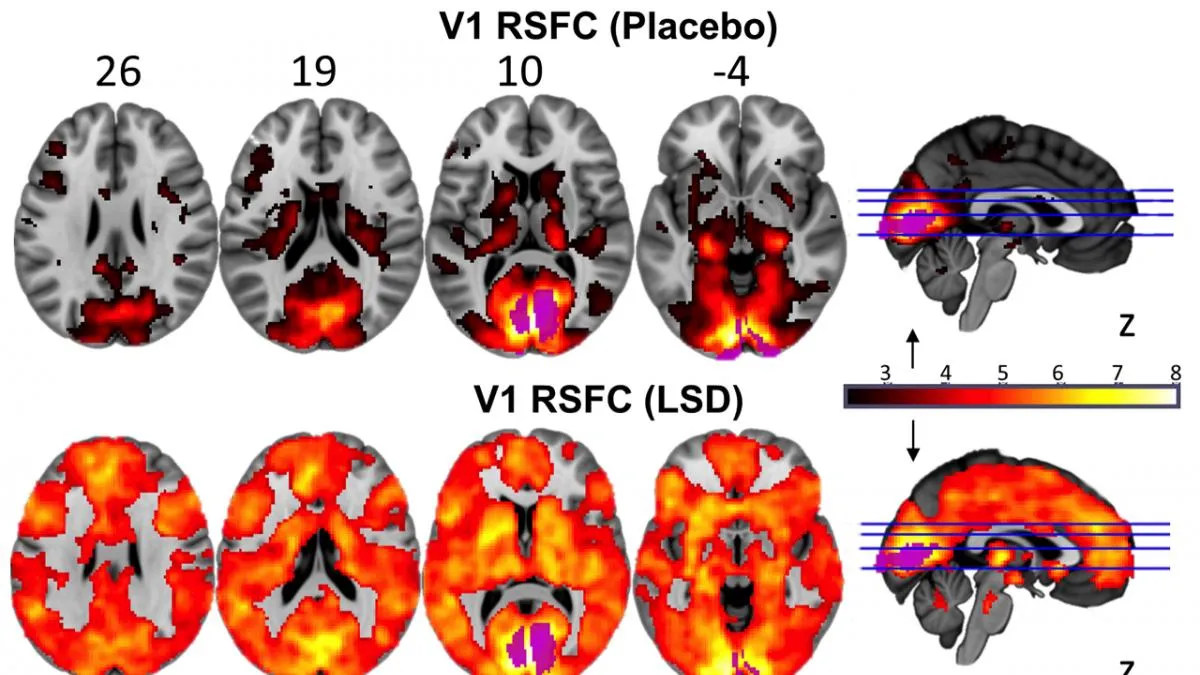
Following the news of a landmark study into theeffects of LSD on the brain, we look at what actually happens when you are having a "trip".
Most drugs operate by mimicking the normal hormones, neurotransmitters, and other chemical messengers that exist in the human body. Morphine for example behaves like the endorphins, our natural painkillers. LSD is a perfect fit for a receptor that normally binds with serotonin (specifically the serotonin 2A receptor), and attaches more strongly to it than serotonin itself. The receptor is the keyhole, and LSD the lockpick. Think of it as a form of biochemical burglary.
The neuron that holds the serotonin 2A receptor, now plugged with LSD, becomes more “exitable”. All the details have yet to be worked out, but it seems that the net result is that the activity of all the serotonin 2A receptor-possessing neurons of the cortex – which normally fire in synchrony – becomes “disorganized”. The overall electrical activity becomes slightly more chaotic.
Brain scans have now revealed profound effects at a broader anatomical level. The visual cortex increases its communication with other regions of the brain (termed the ‘resting state functional connectivity’), which may explain how emotions, thoughts and feelings can ‘colour’ what you see. Moreover, increased blood flow to the visual cortex seems to explain the geometric patterns and other hallucinations that are seen, even when the eyes are closed.
Alongside visual hallucinations, another key feature of a psychedelic “trip” is “ego loss” – a sense of being more “at one” with people and things around you, less of a singular entity yourself. This study found that ego dissolution correlated with decreased connectivity between two specific parts of the brain: the parahippocampus and the retrosplenial cortex, two components of the “default mode network”, a constellation of brain regions often nicknamed “the seat of the self”. Ultimately, this could tell us a great deal about the nature of the “ego” in normal waking consciousness.
Overall, thestudyfound that the net effect of an LSD trip is to decrease the amount of “segregation” between networks that do not normally communicate with each other: across the brain, novel patterns of communication emerge, perhaps helping to explain how sounds can have colours, smells can have sounds, and everything seems imbued with meaning.
Ultimately, the important lessons this all has to teach us are not about the nature of being high, but about what it means to be sober - and to be conscious at all.
Follow Science Focus onTwitter,Facebook, Instagramand Flipboard